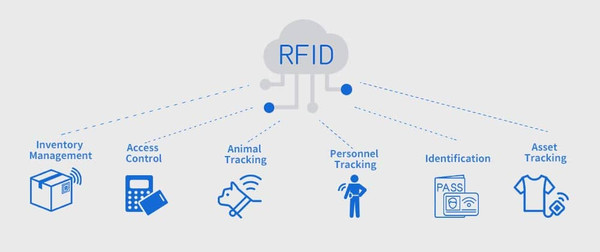3 helpful uses of RFID technology
Posted by barcodes.com.au on May 04, 2021
At first there were barcodes and then came RFID.
Let me explain.
Barcodes, those series of black lines that give an object an identity, have been a phenomenal tool in many aspects of business operations, but it was inevitable that technology would progress and take the concept further.
RFID technology represented a major jump in identifying objects by simply taking away the need for a device to scan a barcode at close range. Now giving the object an identity through a radio frequency tag meant that wireless identification could be achievable.
This major breakthrough has brought about many helpful uses in the real world. Here are three uses cases for RFID that are currently in practice around the world.
1. Asset Tracking
Businesses are flush with assets.
For example, in the healthcare environment there are assets such as beds, medical devices and linen. In art galleries, the art are all assets.
RFID allows for effective, autonomous tracking of assets throughout the business as they move around.
Each asset will have an RFID tag placed on it. These tags can be read by fixed RFID readers or via a handheld mobile RFID reader.
As the assets move between locations within the premises, the RFID tags and readers will track the movements of the assets in and out of locations.
The result is that every asset with a tag is visible which reduces wastage and loss, allows for more effective utilisation of assets and allows staff to efficiently manage the use of assets.
We see such solutions used in healthcare, manufacturing, hotels, museums and art galleries, Fire and emergency services, and other organisations that have many assets they wish to track.
2. Stock Management
Just as barcodes have been used for many years to track movements of products in and out of warehouses and retailers, now RFID technology can go one step further.
For example, if you needed to undertake a stocktake with traditional barcodes, someone would have to scan every box on the shelf to add to the tally. With RFID, the operator would wave their RFID mobile reader over the area that you wish to count the stock and an accurate stock count would be attained in seconds rather than days.
Using fixed RFID readers can also allow for tracking of products in and out of warehouses wirelessly such as booking in new stock to the warehouse and also help with locating items for faster product picking.
3. Ticketing/Access Control
RFID tags are changing the way in which ticketing and access control in venues is managed, especially in venues that see members or repeat customers.
We see ski resorts giving their patrons RFID tags for ski lift access. The RFID tags identify who has access which allows for gates to open letting those eligible in.
The same scenario exists at gyms and other sporting facilities with the main benefit being the unattended nature of the access. No more staff checking people in. Often these systems tie into cloud based solutions that allows the member to check their status online, renew memberships or purchase tickets.
As the adoption of RFID technology has increased across the globe, the cost of implementing a solution has decreased. An RFID tag does cost more than a barcode label to implement but the cost savings of wireless asset or product identification and the resultant efficiencies in workflows makes it a cost effective solution in many industries.
If you want to evaluate whether RFID technology can assist your business then get in contact with our team and we can work with you to see what solutions will fit.

